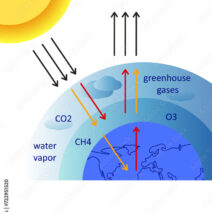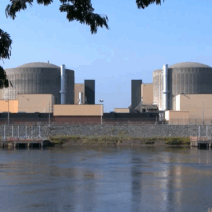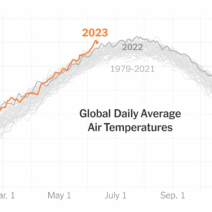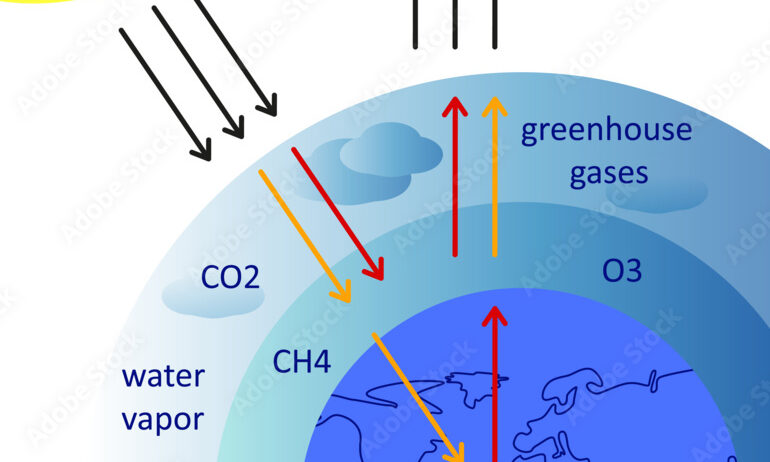Climate change has become a perennial topic of conversation, inciting impassioned debates and fostering a sense of urgency across sectors. At the heart of this discourse lies a scientific phenomenon often brushed aside in favor of buzzwords: the greenhouse effect. Understanding this fundamental concept is crucial, for it elucidates how our planet is warming and why mitigating its impacts is imperative for survival.
The greenhouse effect is a natural process by which certain gases in Earth’s atmosphere trap heat, keeping the planet warm enough to sustain life. It operates on a delicate balance—without it, Earth would become inhospitable, plunging to frigid temperatures. However, the undeniable reality is that human activities, particularly since the Industrial Revolution, have intensified this phenomenon to an unprecedented degree.
To grasp the greenhouse effect, one must first understand its intricate workings. Sunlight reaches Earth, primarily in the form of visible radiation. The planet absorbs some of this energy while reflecting a portion back into space. This absorbed solar energy is converted into heat, causing the surface temperature to rise. In a typical scenario, some of this heat escapes back into the atmosphere. However, greenhouse gases—including carbon dioxide (CO2), methane (CH4), and nitrous oxide (N2O)—are adept at absorbing and re-emitting this infrared radiation, thereby trapping heat and creating a thermal blanket around the planet.
Interestingly, the composition of atmospheric gases has evolved over geological timescales. For millions of years, natural cycles maintained relatively stable levels of greenhouse gases. However, since the mid-20th century, an alarming trend has emerged, characterized by soaring CO2 concentrations. The combustion of fossil fuels, deforestation, and industrial practices contribute disproportionately to this rise, fundamentally altering the planet’s energy balance. As a result, Earth’s average temperature has increased by approximately 1.2 degrees Celsius since the pre-industrial era, a seemingly modest figure that belies its significant impacts.
The ramifications of this temperature increase are complex and multifaceted. One notable consequence is the alteration in weather patterns. As temperatures rise, equatorial regions heat more rapidly than polar areas, creating imbalances that lead to extreme weather events. Heatwaves intensify, precipitation patterns change, and storms become more ferocious. This instability disrupts ecosystems, jeopardizes wildlife, and threatens agricultural productivity, which is increasingly susceptible to unfavorable conditions.
Moreover, the interconnectedness of the greenhouse effect and other environmental phenomena magnifies its significance. The melting of ice caps and glaciers, for instance, is a direct consequence of warming temperatures. As polar ice diminishes, sea levels rise, posing a severe threat to coastal communities worldwide. Additionally, as ocean temperatures rise, the capacity of these bodies of water to absorb CO2 diminishes, further exacerbating atmospheric concentrations of this greenhouse gas. This cyclical relationship exemplifies the intricate web of feedback mechanisms that characterize our climate system, revealing how the implications of the greenhouse effect extend beyond mere temperature increases.
Public fascination with the greenhouse effect often fluctuates between alarm and apathy. While media attention has amplified awareness, misconceptions often cloud understanding. Terms like “climate crisis” and “global warming” have been sensationalized, leading many to adopt a skeptical stance. This skepticism can stem from a fundamental misunderstanding of the scientific principles underpinning climate change, some erroneously equating short-term weather fluctuations with long-term climate trends. It is vital to dispel these myths by presenting the irrefutable evidence supported by climate science, thus fostering informed dialogues that transcend buzzwords.
Addressing the greenhouse effect’s impact requires active participation from all sectors of society. Governments, businesses, and individuals alike possess the agency to mitigate impacts. The transition to renewable energy sources, such as solar, wind, and hydropower, holds enormous potential for reducing greenhouse gas emissions. Additionally, implementing energy-efficient technologies and promoting sustainable agricultural practices can significantly contribute to emissions reduction. However, individual action is equally paramount. Simple lifestyle changes—such as reducing meat consumption, embracing public transportation, and minimizing waste—can collectively create a substantial positive impact.
Moreover, education plays a critical role in combating climate change. Educating communities about the greenhouse effect can demystify its processes and foster a collective sense of responsibility. Grassroots movements, environmental organizations, and educational institutions must unite to create platforms for disseminating knowledge. It is essential to foster a culture of stewardship, where individuals perceive themselves as custodians of the planet, actively engaging in initiatives that safeguard the environment for future generations.
In closing, the greenhouse effect is not merely a scientific concept confined to academic discourse; it is a pivotal factor driving the warming world we inhabit. Its implications are profound, influencing ecosystems, economies, and the very fabric of society. By transcending the jargon and embracing the complexities of climate change, we can galvanize action toward a sustainable future. It is not simply a matter of acknowledging the greenhouse effect; it is imperative to act with urgency and intent, for our planet’s integrity hinges upon our collective response. The time for action is now, and an informed, engaged populace is our best tool for crafting a resilient future.






